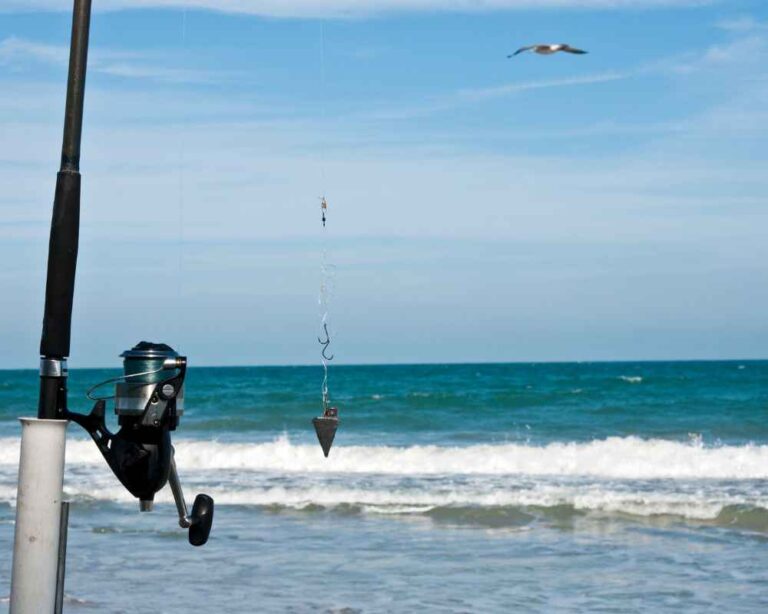Carolina Rig: How To Setup And Fish For Bass
Are you looking to learn how to use the Carolina rig for bass fishing?
The Carolina rig is a fantastic way for anybody to catch more fish. It’s simple and effective, but it might be tough to master if you have no prior experience. That’s why I created this guide – so that anyone who wants to learn how can do so easily!
You will learn all you need to know about:
- Setting up the Carolina rig
- Choosing the right hook, line, and sinker
- Best lures and bait to use
- Sizing the fishing rod and reel
- How to fish this rig
You will also see additional essential information to help you get the most out of it.
This guide is written so beginners can quickly become experts at how to catch bass with a Carolina Rig!
What Is A Carolina Rig?
The Carolina rig is a fishing tackle configuration that is used to catch a wide range of fish species and is particularly useful for catching spotted bass, bigmouth bass, catfish, trout, and walleye. This rig is also highly effective in saltwater fishing dragging across the bottom.
This rig is best fished with the bait on or near the bottom better than any method out there and it covers lots of water. You can use the weight to feel for offshore structure and deep water to learn bottom composition and where big bass may hold.
For this rig, a long leader is required, which can vary from 1.5 – 8 feet. This allows a weightless hooked bait to swim freely in the currents at the lower level of the water column.
This rig is often used as search bait by many anglers. They fan cast it across a wide area for covering water quickly, and when they start catching fish, they’ll slow down and concentrate on that location before moving on when it becomes quiet.
How To Setup A Carolina Rig
The C-rig is a rather straightforward design.
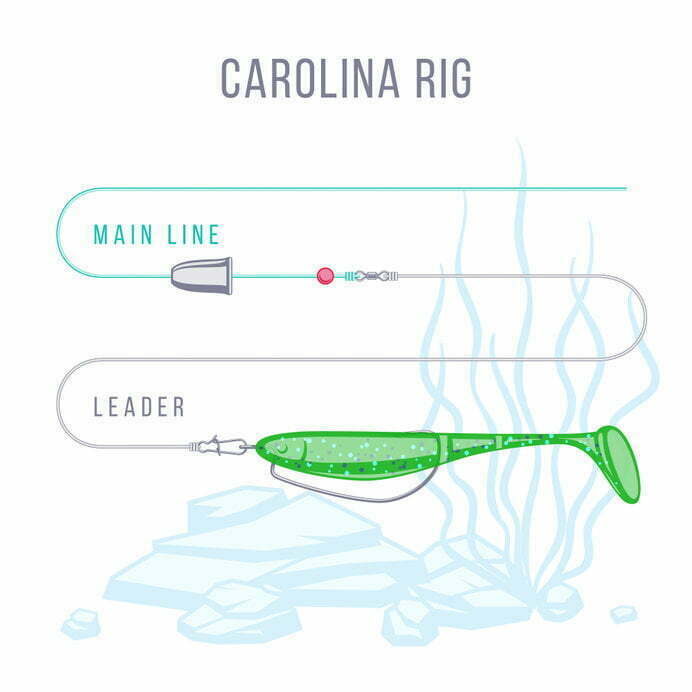
Carolina rig fishing tackle setup scheme for catching bass, pike, perch, zander, and other predatory fish.
- A strong mainline is necessary for a Carolina rig. This is due to the fact that Carolina rigs are dragged across more structure and have a sliding weight on the mainline rather than the leader, putting further strain on this line. Recommended: 20-pound fluorocarbon.
- Slide a bullet or barrel weight onto the mainline next. This weight will move down the mainline and bang against a bead. Recommended: 3/4 ounce or 1-ounce weight.
- Slide a bead next which serves as a stopper before the leader and produces noise that lure more bass. Recommended: a single faceted plastic bead.
- After that, tie the main to a barrel swivel, which binds it with the leader material using an “improved clinch” knot. The swivel is essential for avoiding line twists. Recommended: Size 3: 77 lbs test. This size is strong and still fits well through baitcaster rod eyes.
- The next component of the Carolina rig setup is the leader material. Tie to the other end of the swivel using an “improved clinch” knot. Recommended: Fluorocarbon, 18 inches or as long as 8 feet depending on the cover height you are fishing.
- Tie an offset or EWG hook to the leader with a “snell” knot. Recommended: 3/0 – 4/0 offset hook.
- Finally, bait the hook with a soft plastic worm or creature bait with a seedless presentation with the hook in the bait. Recommended: Brush hog, lizard, fluke, ribbon-tail worm, and Senko worm.
Which Line Is Best For A Carolina Rig?
Selecting the correct fishing line is a crucial decision when building your rig, as it can greatly impact your chances of success on the water.
The mainline for this rig should be fluorocarbon with a thicker diameter. Braid is ideal for other rigs and presentations, especially casting for long distances, but it isn’t a good choice for this one.
Monofilament is the most cost-effective option. It is more abrasion-resistant and lighter in the water than a fluorocarbon. However, it has a disadvantage in that, because of line memory and thickness, it results in shorter casts and is more difficult to handle knots.
Braid is thinner and is superior for longer casts, but knots need to be checked more often and then it tends to fray under friction.
Fluorocarbon has a number of advantages over braid or monofilament when it comes to fishing a Carolina rig:
- Abrasion resistance and strength. Carolina rigs are mainly for fishing at the bottom and dragging a heavier weight similar to a “ball and chain”. The weight system will move with the cast and retrieve along the mainline.
- Knot integrity under pressure. Fluorocarbon will be more durable than any other material because it is resistant to abrasion and friction under constant contact with the sliding bead and weight. The weak link will be the knot between the mainline and the leader swivel, where monofilament and braid fall short.
Recommendation: 15-20 lb Fluorocarbon.
Leader Type And Length For Bass Bottom Fishing
The Carolina rig leader length falls into two main categories:
- Longer leader. In general, you will want a longer length for clear water or fishing deep. This ranges from 3 to 8 feet long depending on the structure and cover you are dragging around. Because the bait is separated at a greater distance, it appears more natural since the weight isn’t linked to the bait. The disadvantage is a more difficult casting leader, harder to detect a bite and a more challenging hook set.
- Short leader. This length is designed for murkier or shallow water. It ranges from 18 inches to 3-feet long. Better for when the bass is more active, easier to cast and detect a bite, and better hook up.
The two basic line material options are fluorocarbon and monofilament.
- Fluorocarbon is a superior leader material since it is more sensitive to the feel and produces better hook sets. It’s difficult for fish to detect, despite the fact that it isn’t entirely invisible.
- Monofilament has more stretch and memory, making it more difficult to control when casting, reeling in, and storing on the spool.
Some anglers use the same line as the mainline. However, there are several advantages to using a lighter leader line weight. This rig is designed to drag on the bottom, so it will frequently strike rocks and boulders, with a chance of snagging. The lighter the leader, the greater its chance of breaking off under severe snagging to prevent losing the weight set.
Recommendation: 12-15 lb Fluorocarbon.
What Is The Right Weight For Carolina Rigging?
The weight system does two things:
- Allows anglers to feel “structure” in the water bottom. This is especially important for detecting variations such as dips, humps, underwater channels, drops, and crests, which are more effective for catching bass.
- It makes noise, which attracts fish. This may be beneficial in deeper water, murky water, or if the fish aren’t biting often.
When it comes to bass fishing, you’ll need weights that are heavy enough to assist you in getting your bait deep and keeping it there, yet light enough to give sensitivity to the bottom.
Common weight sizes are:
- 1/8 ounce for clear water and light current
- 1/4 ounce for moderate current
- 3/8 – 1 ounce is used in heavy cover
- 2 – ounces for 20+ foot water depth
The most common shapes are a barrel, egg sinker, or bullet design. Tungsten weights with a barrel shape slice through grass and brush smoothly, ensuring that you don’t get snagged while also delivering outstanding performance.
Tungsten is a more expensive, smaller-profile alternative that produces louder clicks and works better on the rig. It’s a very hard material that allows you to feel the bottom much more effectively. The disadvantage is that once caught in rock, it has no give and is hard to remove.
The most budget-friendly alternative is lead weight. Lead is less efficient than tungsten, but it does the job and won’t break the bank. It’s softer than tungsten and easier to free when snagged.
Recommendation: lead weight ranging from 3/4 ounce to 1 ounce.
What Is The Best Bead To Use For Fishing Rigs?
The bead serves an important part of the Carolina rig. It makes a clicking noise as it collides with the sliding weight on the mainline. This noise can be very effective for attracting bass who are curious or irritated during the spawning season.
The Carolina rig mainline will slide through the holes in the beads. This eliminates the need for another knot.
Beads are available in a number of materials, including plastic and glass. A glass bead striking a tungsten weight makes for a sharper, more resonant sound, but it can also chip or fracture, which can cause the mainline to fray.
Even if the clicking sound is less apparent, multifaceted or basic plastic beads are acceptable and quite safe for the mainline.
Recommended: Because of these factors, plastic beads are better.
What Is The Purpose Of A Swivel For The Carolina Rig?
The main purpose of the swivel to this rig is three-fold:
- To prevent line twists between the mainline and the leader
- Serve as a stopper for the barrel weight and a plastic bead that will travel along the mainline.
- Keep a consistent leader length to the bait.
It is important to use a swivel that will fit through the guides of your rod safely, especially for baitcaster rods.
Recommended sizes: #2 – #7 which line strength ranges 51 – 101 lbs.
Which Fishing Hooks Work Best For A Carolina Rig?
The C-rig hook is distinguishable from other fishing hooks with these characteristics:
- Stiff wire. This keeps the point rigid and tough, keeping it from bending when working through dense cover.
- Wide gap. Allows the hook to be used for Carolina rigging worms and other soft plastic baits with a larger profile, while still providing a solid hookset.
- Wider shank. Can handle heavy line and keep from being pulled out of the fish’s mouth on the hook set.
When it comes to bass fishing, you’ll need hooks that are thin enough to allow your bait to freely follow currents as you drag the weight along the bottom and firm enough to allow for a secure hook setting in deeper waters.

Common hook sizes are:
- 3/0 EWG hook
- 4/0 EWG hook
- 5/0 EWG hook
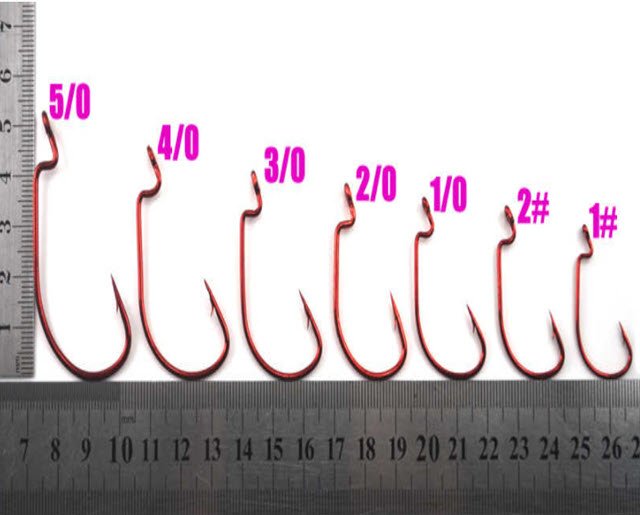
Fishing Knots To Use For A Carolina Rig
How To Tie The Improved Clinch Knot
The improved clinch knot, sometimes known as the “fisherman’s knot,” is a useful method for fastening hooks and leaders. Learn how to tie the improved clinch knot here.
How To Tie The Snell Knot
The snell knot is ideal for tying hooks, especially when they are tilted back like an offset or EWG hook. Learn how to tie the snell knot here.
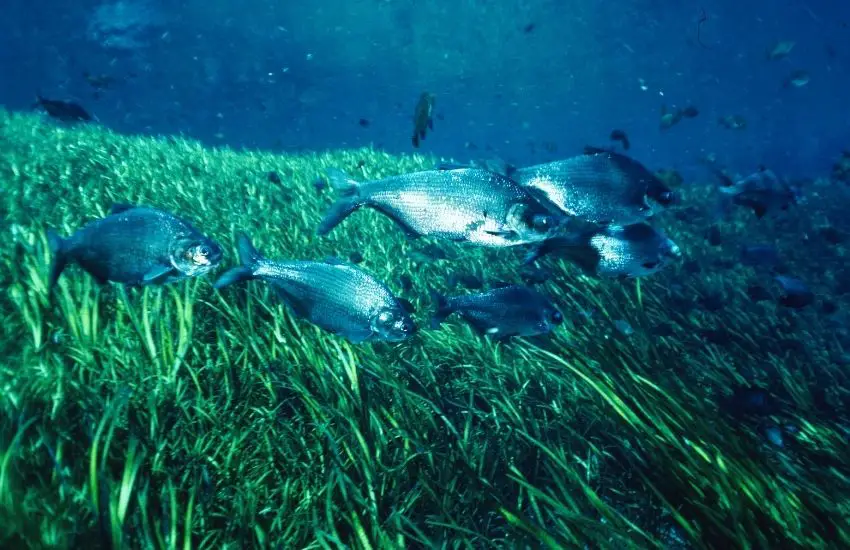
How To Choose The Best Bait For Carolina Rigs
Carolina rig baits great for fishing are soft plastic worms and creature baits like lizards, tube baits, frogs, grubs, and worms.
Because they mimic animals that live at lake bottoms and streams, creature baits are fantastic bottom fishing lures for bass.
The Carolina rig soft plastic baits fall into two main categories:
- Creature baits. In general, I prefer to use brush hogs, lizards, and flukes. When it comes to bass fishing, these are always in my tackle box.
- Worms. I’m a big fan of ribbon-tail worms and Senko worms.
Size and color are the two most important characteristics of soft plastic baits:
- Size. Carolina rigging worm sizes range from 4″-10″ in length. The Carolina rig is designed for fishing the larger worms, with the large profile enticing more bites. Creature baits can range from 3″ up to 12″, but Carolina rigging works best with the larger sizes.
- Colors. Carolina rigging works best with natural colors like green pumpkin or chartreuse. Other popular Carolina rigging color options are brown and watermelon seed (a darker red color).
Carolina rigs can be fished in a variety of different colors and patterns, although dark ones are better for low light conditions, overcast and cloudy days, and murky waters.
Lighter, contrasting colors work better in clear water and sunny overhead skies.
Recommendation: You’ll need to experiment with a variety of color and size patterns, which will depend on the season and water conditions.
What Fishing Rod And Reel Are Best For A Carolina Rig?
The best Carolina rig rod is strong enough for handling heavy grass or around shell beds and around structure.
A Carolina rig requires a longer fishing rod with medium to heavy power. This robust backbone will handle the heavier rig weight better. This rod will also help in setting the hook better when you’re fishing with the longer leader line.
You’ll also benefit from a fast-action tip that allows you to feel fish bites and the bottom while dragging with the C-rig’s long leader.
Recommendation: 7-foot to 7′ 6″ medium-heavy rod with a fast action rod tip.
You will be fishing in deeper water with lengthier leaders and plenty of slack in the line. This requires a high-speed reel for faster retrieval and a stronger hook set.
Recommendation: High-Speed Reel with a gear ratio of 6.4:1. This reel gearing helps to pull into line quickly which is important when fishing C-rig with 18″ and 30″ leaders.
How Do You Fish A Carolina Rig?
This rig is made to cover a large area while dragging slowly along the bottom in deeper water at changes in structure.
This technique will be time-consuming, but it will be well worth it when you get the results you want. This will become your go-to method for finding low-lying bass once you’ve had success with it and feel more comfortable with it.
When casting, the sinker and bead bang together at the barrel swivel to make a clicking noise. The bead additionally prevents the leader knot from fraying after continuous contact with the sliding weight.
The mainline is weighted or pegged, which means it sinks faster and allows you to fish deeper. A plastic bead is set near the sliding weight.
In tough conditions like stronger winds or murkier waters, use a different leader length to cover deeper water or try another bait choice.
Getting Started
When picking a fishing location for this rig, keep the following things in mind:
- Find the baitfish. It’s not necessary to have baitfish in order to find feeding bass, but you won’t catch the bass without them.
- Baitfish size. With baitfish, size matters. Larger bass are more inclined to feed on baitfish that are 3 to 5 inches long than those that are under 1 inch long. Look for balls of bait that are bigger rather than smaller when possible.
- Changes in structure. Look for dramatic changes in structure, such as a slope or incline, over rocks, gravel, and deep wood. Carolina rigging is particularly effective on deeper flats adjacent to main lake structure such as steep banks, creek beds, and humps.
- Depth of water between 8-15 feet. In this range of depths, bass will choose a location that is near the bottom and around the ideal cover.
- Water clarity. In clear, stained, and turbid water, Carolina rigging is effective. However, this factors in selecting the bait size and color.
Casting Your Carolina Rig
- Cast your rod with a sweeping motion from the side of your dominant hand.
- After the cast, manually pull the line out from the reel and let the C-rig fall.
- The Carolina rig sinks to the bottom as it is dragged down by the weight.
Dragging The Rig
- When you drag and retrieve the rig, it makes a sharp clacking noise that attracts big bass in the area.
- Keep the rod tip low after the cast at about 10 o’clock.
- Pull the rod tip up to the 12 o’clock position to drag the weight along the bottom.
- Retrieve the line slowly while taking up slack and gradually drop the tip back to the 10 o’clock position.
- Continue until you feel a bite on the line.
- Take note of the sinker weight’s vibrations on the bottom.
Setting The Hook And Retrieval
- Pull hard at 12 o’clock to set the hook.
- Retrieve the line quickly and avoid all slack on the line as you drop the rod tip.
- Pulling hard keeps tension on the line in deep water.
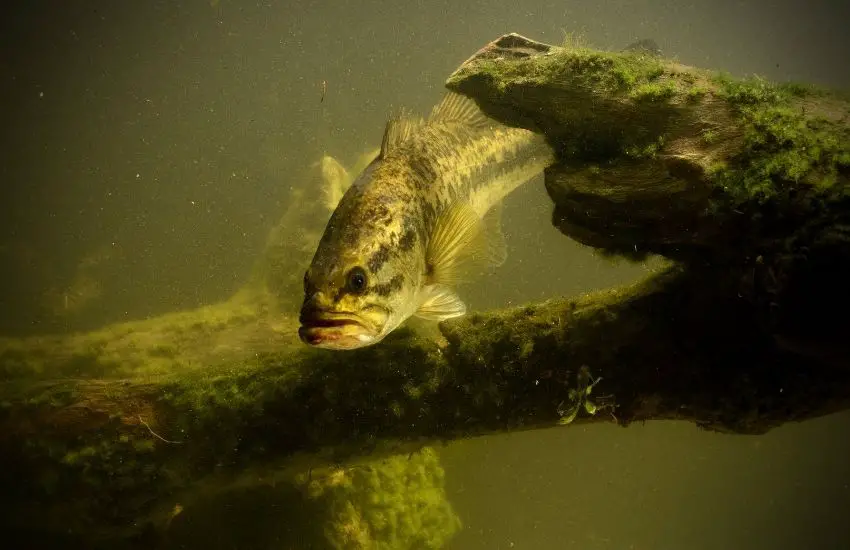
Where To Fish A Carolina Rig
C-rigging is the most effective way to fish for bass in deep, open water. The Carolina rig allows you to cover huge expanses quickly and easily with a slow presentation that is utilized near water structures like points, humps, dropoffs, and flats.
It’s most useful for covering huge expanses of deep open water quickly with a bait fished horizontally from the bottom that drags slowly along the bottom looking for key structures or cover.
It’s the most effective method of fishing from the bottom with a weightless presentation.
When Is The Best Time To Use A Carolina Rig?
This rig is a great summer bass fishing basic rig for when the fish go deeper. It can perform well throughout less active portions of spring, such as pre-spawn feeding and following spawn recovery periods. During the nesting season, you may take advantage of the bass’ aggressive nature.
Even in the fall when temperatures are dropping, you can catch bass schooling along points as they binge feed preparing for the winter months.
Conclusion
I reviewed how to set up the basic Carolina rig, when and when to fish it, and a breakdown of its various components.
You discovered how they’re built and drag-fished as well as instructional how-to videos for tying knots and various fishing tips.
I hope this article has helped you find a few new ideas to try out next time you head out on the lakes and rivers to bottom fish for bass.


